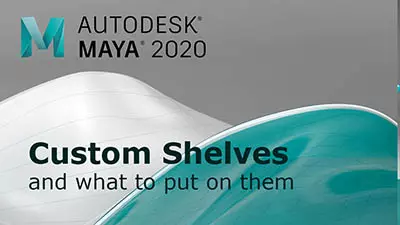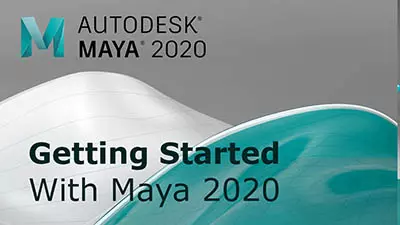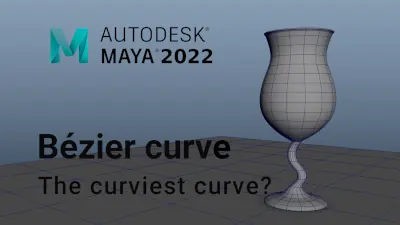Digital humans the art of the digital double
Ever wanted to know how digital doubles are created in the movie industry? This course will give you an insight into how it's done.
#
1
03-04-2014
, 06:49 AM
Registered User
Join Date: Apr 2014
Join Date: Apr 2014
Posts: 2
History Deletion
I've decided to take a plunge into 3D Modeling/Animation(this appears to be a bottomless rabbit hole), and have been working with Maya 2014 for the past few days. One thing I've noticed that keeps popping up in the tutorials that I've been viewing is History Deletion. The tutors in the videos are pretty adamant about doing this at certain points during the modeling process, and I follow along and complete this step but I don't really understand what exactly it's doing.
Does anyone know of a good resource on the interworkings of history and history deletion? The questions I have are as follows:
What is logged in History?
Where can I see this historical information?
What is happening when I delete history?
When I select Edit > Delete by Type > History, is this deleting only a specified deletion or is it deleting ALL history?
How is Maya handling this on the backend?
If I don't delete history, what effect may this have in the future modeling process?
I think my real confusion on all of this, is that while the tutorials that I've watched shows me HOW to do something, it doesn't explain to me as to WHY I should do it and often leaves out the specifics of how the application is handling the commands I'm giving it.
Any help on this would be greatly appreciated.
Last edited by Elynole; 03-04-2014 at 06:51 AM.
#
2
03-04-2014
, 09:25 AM
In the past some problems I have hit is 1) slowing down the program as its storing alot of unneeded data. 2) tranlation and rotation errors, due to multiply unneeded inputs 3) grouping and dupulation problems.
Again not sure why these problems come up, just know that keeping clean messes by deleting the history is a very good start to fixing them.
One thing I do know is that delete history only effects the object you have selected. If you look the option to delete all history is the next option down in the menu.
Hope you get your answers.

#
3
03-04-2014
, 10:44 AM
EduSciVis-er
Join Date: Dec 2005
Join Date: Dec 2005
Location: Toronto
Posts: 3,374
Now this is good because the flow of info is live and dynamic. For example, you can change the number of cube divisions in the creation node even after your cube is created. Or tweak a curve and the revolved surface will update accordingly. So having that history intact is great for making those afterwards edits.
But, you can see how this slows down calculations because maya has to pipe the info through many nodes after a while just to draw your shape. When you are finished with the input nodes, you can delete history and maya will bake all that info through the input nodes to your shape node / Geo. Now maya has fewer calculations to do and it takes less memory.
I hope that makes some sense. It takes a while to get familiar with how things work, but if you think about it all in terms of connected nodes, you will understand much more.
#
4
03-04-2014
, 11:33 AM
Lifetime Member
Join Date: Apr 2007
Join Date: Apr 2007
Posts: 73
RE: History.
If you have never deleted your history, this means Maya takes a poly cube (lets say) and performs thousands of calculations ( Hundreds of splits and extrudes - Each tweak to your model recorded the translation/rotation of each single vert that changed in any way) And then redraws this final calculated mesh on your screen.
As you tumble even one model, this means redrawing the model many times per second... performing thousands/millions of calculations each time to do so .
Deleting the history stores your models current form as that initial (.obj type mesh data) and it then redraws it from this each time. The more history you have the more your system will 'Chug' - for lack of the correct word...
As Tweety said, I find I will get very odd results when duplicating/ making a sub-d proxy from a model with a chunk of history.... My understanding of history does not explain why it goes wrong.... it should just take longer right? this is why I didn't answer sooner... thought others would have a better answer.
But at its basic level that's why you should.
It doesn't explain why you cant create a poly cube move the top face up a little and THEN change pCube1 inputs divisions. Something so simple shouldn't trip it up if my 'facilitator' knew his stuff?
Learn from others mistakes, it takes too long to make them all yourself.
Last edited by 3dStudent; 03-04-2014 at 11:41 AM.
#
5
03-04-2014
, 02:01 PM
Registered User
Join Date: Apr 2014
Join Date: Apr 2014
Posts: 2
I think I'll stick around these forums, as everyone has been most helpful.
#
6
03-04-2014
, 06:37 PM
Registered User
Join Date: Aug 2011
Join Date: Aug 2011
Location: Sliema Malta
Posts: 497
Posting Rules Forum Rules
Similar Threads
Construction History Question
by OMg.h4x. in forum Maya Basics & Newbie Lounge replies 4 on 08-08-2007
The Purpose of History Erase-al
by Trasendil in forum Maya Basics & Newbie Lounge replies 3 on 14-05-2006
Shattering and History
by Noradul in forum Maya Basics & Newbie Lounge replies 0 on 22-04-2005
Construction history... what is it and how does it effect objects?
by junkyBob in forum Maya Basics & Newbie Lounge replies 1 on 03-03-2005
Deleting History...
by dvnobles in forum Maya Basics & Newbie Lounge replies 2 on 13-03-2004
Topics
Free Courses
Full Courses
VFX News
How computer animation was used 30 years ago to make a Roger Rabbit short
On 2022-07-18 14:30:13
Sneak peek at Houdini 19.5
On 2022-07-18 14:17:59
VFX Breakdown The Man Who Fell To Earth
On 2022-07-15 13:14:36
Resident Evil - Teaser Trailer
On 2022-05-13 13:52:25
New cloud modeling nodes for Bifrost
On 2022-05-02 20:24:13
MPC Showreel 2022
On 2022-04-13 16:02:13








